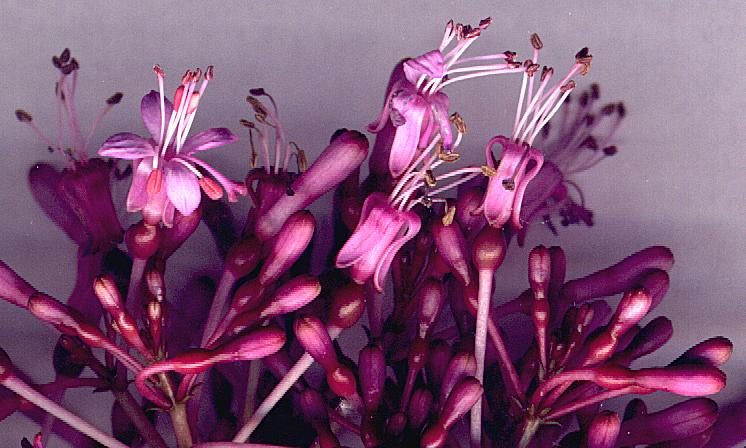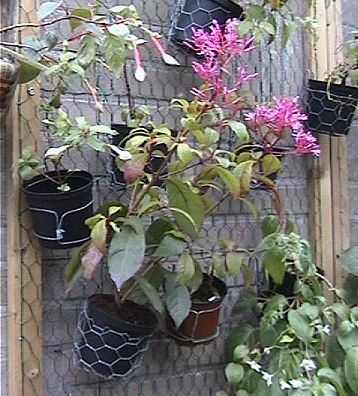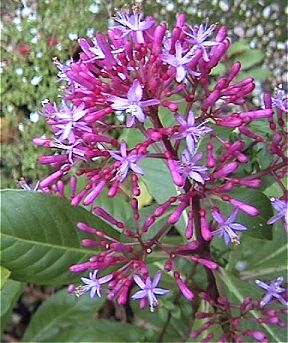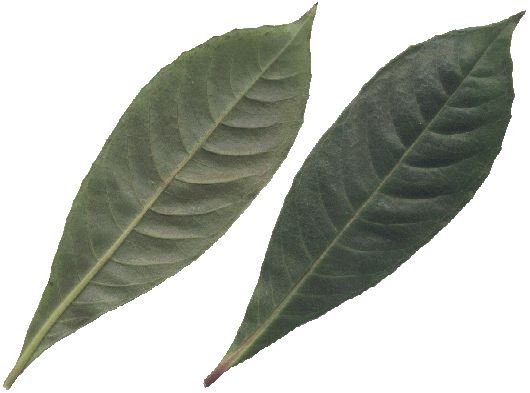

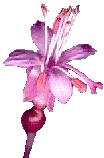
Een botanische fuchsia.... / A natural species...
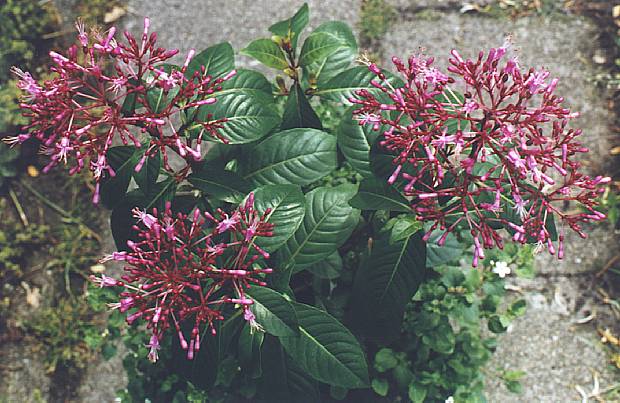




|
Deze plant is mij verkocht als Fuchsia arborescens, maar wat het verschil met Fuchsia paniculata
is, wordt me maar niet duidelijk... Mogelijk is het zelfs een F. paniculata, maar niets wat erover in boeken
of op het Internet te vinden is aan plaatjes en informatie, geeft me er zekerheid over. toevoeging januari 2015 Inmiddels is mij een tip gegeven dat deze plant F. paniculata moet zijn - omdat de bloemtrossen niet langwerpig genoeg zouden zijn, niet genoeg vertakt voor een arborescens. Maar dan klopt het verhaal van de bladeren weer niet - deze zijn ± gaafrandig en die van paniculata zouden volgens deskundigen getand zijn... zoek het maar uit! En wat te denken van de bloemknoppen, die bij paniculata "lilakleurig en lijnrecht" zouden zijn en bij arborescens "donkerrood met verbrede toppen" (op de foto's hieronder ziet men lilakleurige, maar wel verbrede toppen)... Voor mijn gevoel (maar ik ben slechts een leek, een amateur op biologisch gebied) zouden arborescens en paniculata misschien beter onder dezelfde naam kunnen worden gevat, óf de ene, óf de andere... misschien gebeurt dat nog eens, men is met de indeling van het plantenrijk en de daaruit voortvloeiende naamgeving net zo heen-en-werig als met de spelling van de Nederlandse taal! Niet heel lang geleden is er al een "switch" gemaakt van de ene naar de andere soortnaam, n.l.: Fuchsia arborescens 'Zempoalt' werd Fuchsia paniculata ssp. mixensis. Misschien moeten we zo nuchter zijn als Shakespeare, toen deze schreef: "What's in a name? That which we call a rose by any other name would smell as sweet." | This plant was sold to me as Fuchsia arborescens,
but what's the difference with Fuchsia paniculata
never becomes clear to me... Possibly this even is a F. paniculata - nothing of what I found in books
and on the Internet, be it pictures or information, gives me any certainty. added January 2015 Recently I got a mail in which I was told this plant should be F. paniculata, because the inflorescensce is too short, not having enough ramifications for a F. arborescens. But then, its leaves are just about entire, and not toothed as those of paniculata should be according to scientific descriptions. And what about the description of the buds - those of paniculata : "mauve and straight" while those of arborescens are "dark-red and thicker at the top". Well, those in my pictures are "mauve and thicker at the top"... so make your choice! The way I feel about it (but I'm just an amateur in biology...) both species might be better off bearing the same name, either arborescens or paniculata... maybe some day this will happen indeed, for quite often groups of plants are suddenly qualified as more, and in other cases less related than before, which results in changing of names. Very complicated altogether, but perhaps with old Shakespeare we should say: "What's in a name? That which we call a rose by any other name would smell as sweet." Not long ago there already was a "switch" from one species to another: Fuchsia arborescens 'Zempoalt' became Fuchsia paniculata ssp. mixensis. |


